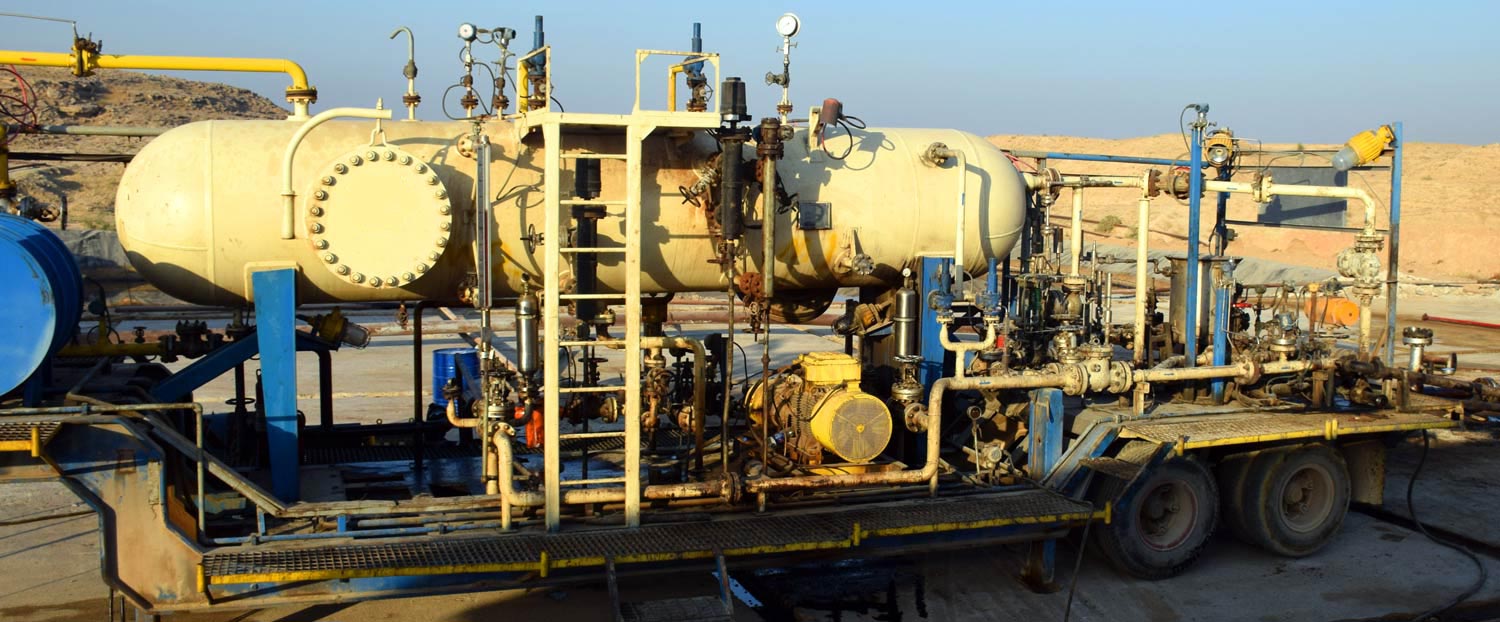In line with the declared policy to ramp up oil output from shared oilfields with Iraq in the West Karoun oil block in Khuzestan Province, using modern equipment like mobile oil treaters (MOTs) are on the agenda, a senior oil official said.
"The Petroleum Engineering and Development Company (PEDEC) will use MOTs for the first time in West Karoun oilfields as a practical approach to increase output," Noureddine Shahnazizadeh, managing director of PEDEC, was reported by Shana on Thursday.
MOT is a system for eliminating acid, gas, water, salt, sand and silt from crude oil and pumping it to the pipeline during the drilling, repairing, acidizing and testing of oil wells.
This equipment, which includes pump station, separation, injection and desalting units, also can be utilized for different oil wells with different oil properties. As is known from its name, this device is mobile and it is possible to utilize it on any needed oil well and then easily transfer and install it on another one.
Recalling that construction of fixed treatment oil processing units normally takes a long time which in turn leads to the gradual development of the oil field, Shahnazizadeh said, "Now that boosting production from joint oilfields, namely South Azadegan, is a top priority, PEDEC is considering different alternatives. One is using MOTs."
With reference to raise output from the South Azadegan field, the official noted that production will reach 150,000-160,000 barrels per day by the end of the current fiscal in March 2018 with the help of the mobile oil treaters.
In the first phase of the plan, production is expected to reach 105,000-110,000 bpd within two months and 50,000 barrels will be added through March.
The plan comes after the field's output reportedly reached 80,000 barrels a day last month, a notable rise for an oilfield whose output had never crossed the 50,000-bpd threshold since production began a decade ago.
"As there is a lack of adequate processing units in the field, PEDEC will make use of MOTs to get rid of crude oil organic compounds, many of which are highly toxic and cancer causing," he noted.
According to Shahnazizadeh, the MOTs will be leased (from foreign companies) as they will be used temporarily until the field's fixed treatment units are completed. Saudi Arabia, the UAE, Algeria and Tunisia have already used the technology.
Systemic Rise in Output
Shahnazizadeh said that presently the actual output of the block is around 300,000 barrels per day, including 100,000 bpd from Yadavaran field, 60,000 bpd from North Azadegan, 65,000 bpd from North and South Yaran and 80,000 from the South Azadegan field.
According to Bijan Namdar Zanganeh, the oil minister, West Karoun fields output stood at 70,000 bpd in 2012. That has now quadrupled.
Officials say raising the rate of recovery from West Karoun by 1% would increase recoverable reserves by 670 million barrels, or some $33 billion in revenues with oil at $50 a barrel.
West Karun is the name of an oil-rich region Khuzestan that includes several large oilfields, including Azadegan, Yaran, Yadavaran and Darkhoein with the first three divided into north and south projects. The block holds an estimated 67 billion barrels of oil in place.


